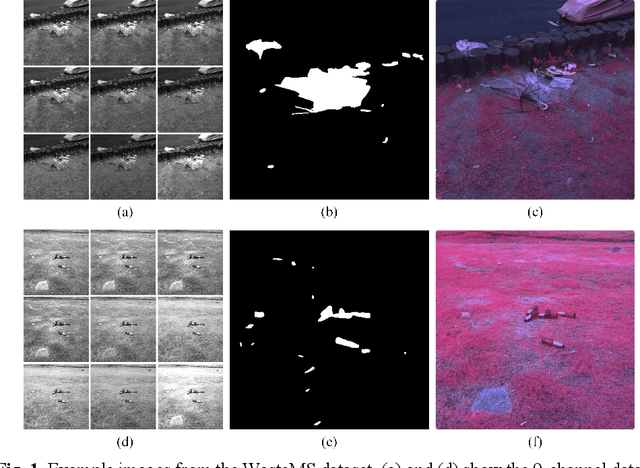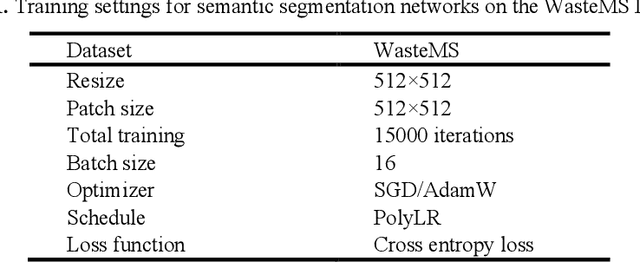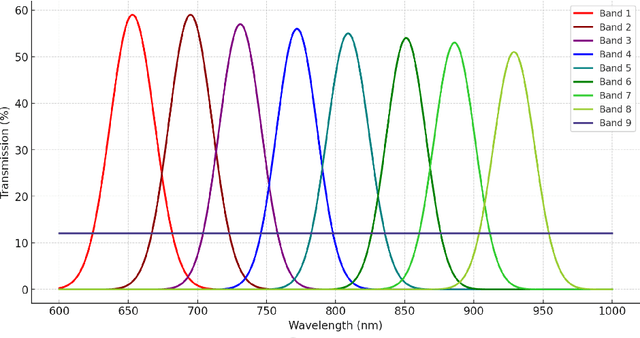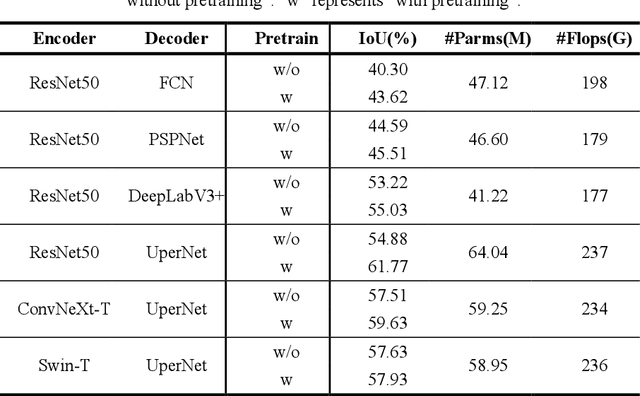Ningxin Weng
Enhancing Environmental Monitoring through Multispectral Imaging: The WasteMS Dataset for Semantic Segmentation of Lakeside Waste
Jul 25, 2024



Abstract:Environmental monitoring of lakeside green areas is crucial for environmental protection. Compared to manual inspections, computer vision technologies offer a more efficient solution when deployed on-site. Multispectral imaging provides diverse information about objects under different spectrums, aiding in the differentiation between waste and lakeside lawn environments. This study introduces WasteMS, the first multispectral dataset established for the semantic segmentation of lakeside waste. WasteMS includes a diverse range of waste types in lawn environments, captured under various lighting conditions. We implemented a rigorous annotation process to label waste in images. Representative semantic segmentation frameworks were used to evaluate segmentation accuracy using WasteMS. Challenges encountered when using WasteMS for segmenting waste on lakeside lawns were discussed. The WasteMS dataset is available at https://github.com/zhuqinfeng1999/WasteMS.
Advancements in Point Cloud Data Augmentation for Deep Learning: A Survey
Aug 23, 2023Abstract:Point cloud has a wide range of applications in areas such as autonomous driving, mapping, navigation, scene reconstruction, and medical imaging. Due to its great potentials in these applications, point cloud processing has gained great attention in the field of computer vision. Among various point cloud processing techniques, deep learning (DL) has become one of the mainstream and effective methods for tasks such as detection, segmentation and classification. To reduce overfitting during training DL models and improve model performance especially when the amount and/or diversity of training data are limited, augmentation is often crucial. Although various point cloud data augmentation methods have been widely used in different point cloud processing tasks, there are currently no published systematic surveys or reviews of these methods. Therefore, this article surveys and discusses these methods and categorizes them into a taxonomy framework. Through the comprehensive evaluation and comparison of the augmentation methods, this article identifies their potentials and limitations and suggests possible future research directions. This work helps researchers gain a holistic understanding of the current status of point cloud data augmentation and promotes its wider application and development.
 Add to Chrome
Add to Chrome Add to Firefox
Add to Firefox Add to Edge
Add to Edge